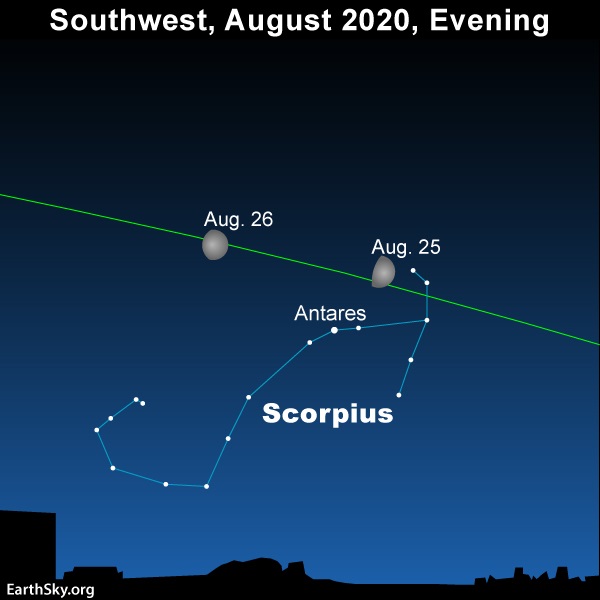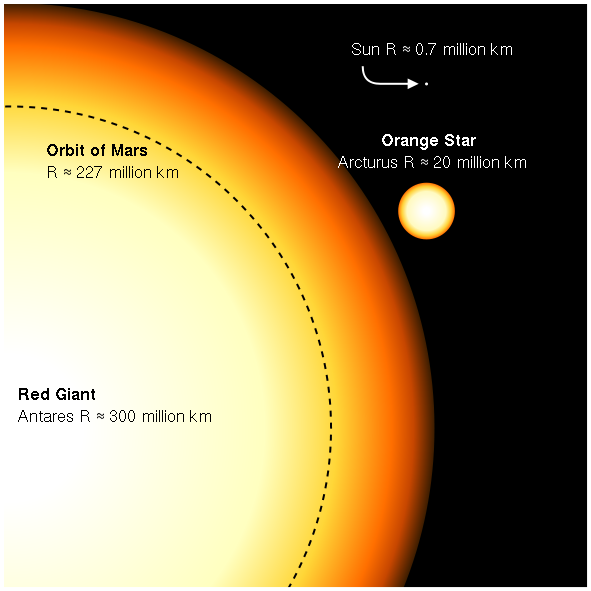
As darkness falls on August 25, 2020, the moon will be at or near its half-illuminated first quarter phase, and close to the star Antares on the sky’s dome. The next night – August 26 – the moon will be farther from Antares, and closer to the graceful curved tail of Scorpius the Scorpion, the constellation in which Antares is the brightest star.
Of course, the moon and these stars are not truly close together in space on these nights. The moon, our closest celestial neighbor, resides at a average distance of 238,885 miles or 384,400 km; yet the sun, our nearest star, lodges some 400 times farther from Earth than our moon.
Meanwhile, Antares is estimated to be 600 light-years away from us. A light-year is about 63,000 times greater than one astronomical unit (sun-Earth distance). So Antares is somewhere around 38 million times the sun’s distance from Earth (600 x 63,000 = 37,800,000 astronomical units).
Antares, the brightest star in the constellation Scorpius the Scorpion, represents the Scorpion’s beating heart. This red gem of a star is truly enormous, with a radius in excess of 3 astronomical units (AU). If by some bit of magic Antares were suddenly substituted for our sun, the surface of the star would extend well past the orbit of Mars!
Antares’ ruddy complexion reveals that this star has a low surface temperature. However, Antares’ great size makes up for its low surface temperature to shine at 1st-magnitude brightness in Earth’s sky. That’s in spite of the fact that Antares lies nearly 600 light-years away.
In the visible spectrum, this red supergiant star has the luminosity of about 10,000 suns. But if we could include invisible infrared radiation, Antares might have as much as 60,000 times the sun’s luminosity.

If Antares replaced the sun in our solar system, its circumference would extend beyond the orbit of the fourth planet, Mars. Here, Antares is shown in contrast to another star, Arcturus, and our sun. Image via Wikimedia Commons.
Bottom line: The moon sweeps close to red supergiant star Antares on August 25, 2020. The next night, August 26, the moon is closer to the graceful curved tail of Scorpius the Scorpion, the constellation in which Antares is the brightest star.
Source:
https://earthsky.org/tonight/moon-and-star-antares-on-august-25